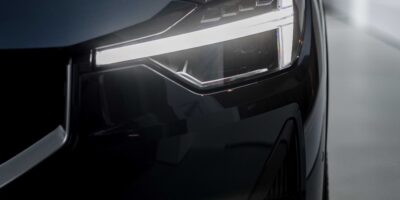As the move towards electric vehicles gathers pace and a greater focus is being placed on the charging network required, new research among UK motorists reveals that a significant proportion believe that the MOT should evolve in parallel with new technology.
Under the current MOT, the test measures emissions from a vehicle’s engine, therefore a purely electric vehicle registers zero emissions. However, in a study for Kwik Fit, the UK’s largest MOT tester, 45% of car owners said they believe that in the future, the MOT should take into account how the electricity used to charge the vehicle has been generated1. This figure rises to 51% among owners of cars less than three years old.
Only a quarter of owners (27%) believe that the source of electricity should not be considered in the test, while over a quarter (28%) said they didn’t know. Environmental considerations are often felt to be greater among younger age groups, which may be the reason why those aged 18-34 are 36% more likely than those over 55 to believe that measuring the source of electricity should be in the MOT of the future. When it comes to a gender split, women are 20% more likely than men to feel this.
Clearly the practicalities of assessing the electricity used are significant as it would require information to be relayed from the charging systems to the vehicle. This would then need to be measured by the MOT testing equipment, requiring data standards to be put in place and major developments to the test.
Eric Smith, MOT scheme manager at Kwik Fit, said: “While the move to electric vehicles is undeniably positive in reducing overall emissions from individual vehicles, we must not forget the importance of ensuring that the energy used by evs is generated as cleanly as possible. To develop the MOT to assess the source of electricity used by evs would require multi-industry standards to be set up, and the test may not be the best way to ensure drivers are opting for cleaner energy.
“However, this research does highlight that millions of drivers believe there should be a way of testing overall emissions for vehicles using electricity. It’s worth remembering that currently hybrid vehicles are not tested for emissions in the MOT, even though they still run on petrol or diesel for some of the time, so perhaps the first change to make should be to include emissions testing for hybrids.â€
With modern cars being fitted with an increasing range of technology to improve safety or to aid drivers, Kwik Fit’s study also asked motorists which of these developments they thought should be added to the components tested in the MOT. More than half of drivers (52%) said that emergency braking systems – which apply the brakes automatically when getting too close to another car – should be in the MOT if they are fitted to the vehicle. A third of drivers (33%) thought that radar, other sensors or cameras used for autonomous driving systems should be checked in the MOT, while three in ten drivers (30%) said lane assist technology should be included.
Start-stop technology was stated by just over a quarter of drivers (26%), with the same proportion (26%) believing parking sensors should be part of the annual test. Parking or rear view cameras were cited by 24% of drivers as worthy of inclusion.
Interestingly, the Kwik Fit research found that drivers who have received an MOT failure are most in favour of developing the test. Those whose car has failed its MOT in the last three years are 15% more likely to believe that these safety features or driver aids should become part of the MOT compared to drivers who have not had an MOT failure in that time2. This perhaps indicates that drivers who have had an MOT failure are more likely to appreciate the important role the test plays in vehicle safety by highlighting problems in components they rely on.
| Safety technology / driver aid | Proportion of drivers believing this should be tested in the MOT when fitted to a vehicle |
| Emergency braking systems (technology which applies the brakes automatically in case of emergency or getting too close to the car in front) | 52% |
| Any radar or other sensors used for autonomous driving systems | 33% |
| Any cameras used for autonomous driving systems | 33% |
| Lane assist technology (technology to ensure a car does not drift out of lane) | 30% |
| Start stop technology | 26% |
| Parking sensors | 26% |
| Parking or rear-view cameras | 24% |
| None of the above | 25% |
Table 1: Driver views on testing technology in the MOT
Source: Kwik Fit, 2021
Eric Smith said: “It’s important that the MOT does not become overcomplicated and focuses on checking the most important elements in vehicle safety. However, motoring technology is continually advancing and the MOT has always been developed to reflect that. As more and more drivers have new technology in their vehicles, it is natural that they will get used to relying on these driver aids, therefore it is essential that these are regularly checked to ensure they will work properly in an emergency.â€
Kwik Fit is also highlighting to motorists that there is no MOT exemption for this lockdown and therefore any cars whose MOT is expiring needs to pass a new test. The current government guidance is clear that it is lawful to leave home to get an MOT, and that cars need an MOT if they are going to be used during lockdown.3
As essential businesses, Kwik Fit centres have remained open during the lockdown, and the company advises that we are approaching one of the peak periods of demand for mots.  Drivers should therefore book as far in advance as possible, rather than hoping to get an appointment at the last minute. Kwik Fit is the UK’s biggest MOT tester and has expanded its online booking service to provide even more options to drivers.
*Article Source http://www.kwik-fit.com








